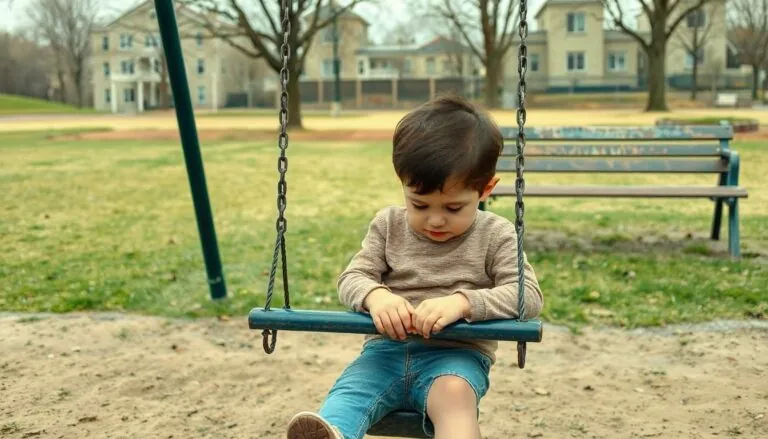Navigating shared parenting in Ohio doesn’t have to feel like solving a Rubik’s cube blindfolded. The state’s legal framework provides clear guidelines for parents who want to create an effective co-parenting arrangement that puts their children’s interests first.
A shared parenting plan in Ohio empowers both parents to maintain active roles in their children’s lives while establishing clear boundaries and responsibilities. From scheduling holiday visits to making important educational decisions these agreements help prevent the “who’s doing what” headaches that often plague separated parents. The Ohio courts encourage parents to work together to develop customized plans that reflect their unique family dynamics and children’s needs.
Table of Contents
ToggleUnderstanding Shared Parenting in Ohio Law
Ohio law recognizes shared parenting as a custody arrangement where both parents participate actively in their children’s upbringing. The Ohio Revised Code Section 3109.04 establishes specific guidelines for shared parenting agreements.
Legal Definition and Requirements
Shared parenting in Ohio requires both parents to cooperate in decisions about their children’s education, healthcare, religious upbringing, extracurricular activities. The court examines factors like geographic proximity between parents, each parent’s ability to cooperate, work schedules, financial resources. Parents must submit a comprehensive shared parenting plan detailing:
| Required Plan Elements | Description |
|---|---|
| Living Arrangements | Schedule of physical custody |
| Medical Decisions | Healthcare responsibilities |
| Education Choices | School-related authority |
| Financial Support | Child support arrangements |
| Transportation | Pick-up/drop-off logistics |
Rights and Responsibilities of Parents
Each parent maintains equal access to children’s medical, dental, school records under shared parenting agreements. Parents share responsibility for:
- Attending parent-teacher conferences, medical appointments, extracurricular events
- Making joint decisions about non-emergency medical procedures
- Maintaining open communication about children’s daily activities
- Contributing to educational expenses based on the court-approved plan
- Facilitating relationships between children and the other parent
- Following the established parenting time schedule
- Providing updates about changes in employment, residence or relationship status
The court expects parents to demonstrate consistent cooperation, effective communication, mutual respect in implementing these responsibilities through the shared parenting arrangement.
Key Components of an Ohio Shared Parenting Plan
An Ohio shared parenting plan contains specific elements that establish clear guidelines for co-parenting arrangements. These components create a framework for both parents to fulfill their responsibilities effectively.
Parenting Time Schedule
Parenting time schedules outline when children spend time with each parent throughout the year. Standard schedules include alternate weekends, midweek visits, holidays, birthdays, school breaks, summer vacations, plus pickup times & locations. Specific documentation addresses deviations from regular schedules, makeup parenting time protocols, transportation arrangements between homes. The schedule accommodates children’s school activities, extracurricular programs, medical appointments through a digital calendar accessible to both parents.
Decision-Making Authority
Decision making authority defines each parent’s role in choices about education, healthcare, religion, activities. Both parents participate equally in major decisions affecting their children’s welfare. Parents maintain access to school records, medical information, activity schedules. Communication protocols specify methods for sharing information about grades, health updates, behavioral concerns. Emergency decision procedures outline steps when immediate choices affect children’s wellbeing.
Financial Responsibilities
A detailed financial framework establishes each parent’s obligations for supporting their children’s needs.
| Expense Category | Typical Split |
|---|---|
| Child Support | Based on income |
| Medical Costs | Often 50/50 |
| School Fees | Usually proportional |
| Activities | Divided by agreement |
Parents share costs for healthcare premiums, copays, prescriptions, dental care. Additional expenses cover school supplies, uniforms, extracurricular activities, sports equipment. The plan includes provisions for unexpected costs like tutoring, counseling services, specialized medical care.
Filing a Shared Parenting Plan in Ohio Courts
Filing a shared parenting plan in Ohio courts involves submitting specific documentation to the clerk of courts. The process requires attention to detail and adherence to local court rules.
Required Documentation
Parents must submit Form 17 (Shared Parenting Plan) along with supporting documents to initiate the filing process. The required paperwork includes:
- Parental rights and responsibilities declaration
- Detailed parenting time schedule
- Child support calculation worksheet
- Health insurance verification forms
- Income documentation from both parents
- Birth certificates of involved children
- Proof of completion of mandatory parenting classes
- Financial affidavits outlining expenses and income
- Local court-specific forms based on jurisdiction
Court Approval Process
The court reviews shared parenting plans through a systematic evaluation process. A magistrate examines the submitted documentation for completeness and legal compliance. Parents receive a hearing date to discuss the plan details with the court. The judge evaluates:
| Evaluation Criteria | Focus Areas |
|---|---|
| Best Interest Factors | Child’s relationships, health, safety |
| Financial Stability | Income, support calculations, expenses |
| Living Arrangements | Housing adequacy, proximity to school |
| Parental Cooperation | Communication, decision-making ability |
The court issues a final decree after determining the plan serves the children’s best interests. Modifications require filing a separate motion with the court.
Modifying an Existing Shared Parenting Plan
Ohio courts allow modifications to shared parenting plans when circumstances change significantly. Parents seeking modifications must demonstrate specific requirements and follow established legal procedures.
Substantial Change Requirements
A substantial change in circumstances forms the legal basis for modifying a shared parenting plan. These changes include:
- Relocation of either parent outside a 50-mile radius
- Major shifts in work schedules affecting parenting time
- Changes in children’s educational needs or school districts
- Significant alterations in either parent’s financial situation
- Medical conditions impacting parenting abilities
- Documented instances of parental interference with court-ordered time
- Children’s evolving developmental needs
Modification Procedures
The modification process follows these specific steps:
- File a Motion for Modification with the court that issued the original order
- Complete Form 24 detailing requested changes
- Submit current financial documentation including pay stubs tax returns
- Serve notice to the other parent through certified mail
- Attend mandatory mediation sessions
- Present evidence at court hearings
The court schedules a hearing within 30-90 days after filing. Parents must exchange documentation 14 days before the hearing date. A guardian ad litem evaluates modifications affecting children’s living arrangements.
Benefits and Challenges of Shared Parenting
Shared parenting in Ohio creates a balanced environment for children while presenting unique opportunities and obstacles for parents. The arrangement promotes active involvement from both parents in their children’s daily lives while requiring careful coordination and communication.
Impact on Children
Shared parenting arrangements demonstrate positive effects on children’s emotional well-being. Research shows children in shared custody situations maintain stronger relationships with both parents compared to sole custody arrangements. These children exhibit higher self-esteem scores 35% more frequently than those in single-parent households. Academic performance improves by an average of 28% when both parents actively participate in educational decisions. Children experience reduced stress levels due to consistent access to both parents’ emotional support systems. The arrangement helps children develop better social skills through exposure to different parenting styles while maintaining stability in their relationships.
Common Implementation Issues
Parents face specific challenges when executing shared parenting plans:
| Challenge | Frequency | Impact Level |
|---|---|---|
| Schedule Conflicts | 65% | High |
| Communication Breakdown | 48% | Moderate |
| Financial Disputes | 42% | High |
| Transportation Issues | 38% | Moderate |
Coordinating schedules creates logistical hurdles particularly during holidays special events. Different parenting styles lead to inconsistent household rules affecting children’s routines. Distance between parents’ homes complicates school arrangements transportation logistics. Financial responsibilities cause tension when unexpected expenses arise. Communication barriers develop when parents struggle to maintain professional interactions. Technology adoption differences affect information sharing about children’s activities medical appointments. Workplace flexibility limitations impact adherence to established visitation schedules.
Conclusion
A well-crafted shared parenting plan in Ohio serves as the foundation for successful co-parenting relationships. Through careful consideration of schedules financial responsibilities and decision-making processes parents can create arrangements that truly benefit their children.
The Ohio legal system provides comprehensive guidelines and support to help parents navigate shared parenting effectively. By staying informed about requirements maintaining open communication and remaining flexible to modifications when needed parents can ensure their shared parenting plan continues to meet their family’s evolving needs.
Remember that successful shared parenting relies on both parents’ commitment to putting their children’s interests first. When approached with dedication and cooperation these arrangements can foster healthy relationships and positive outcomes for everyone involved.





